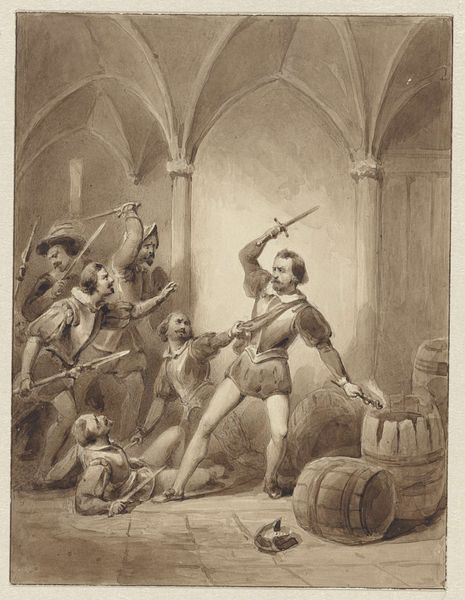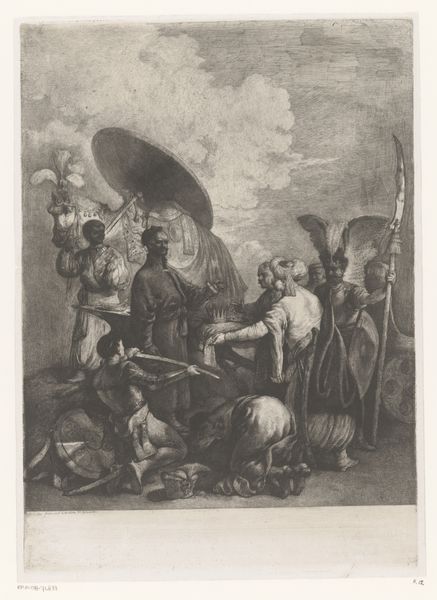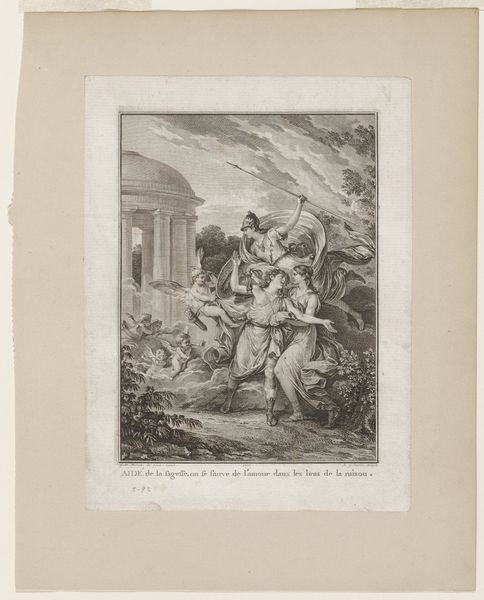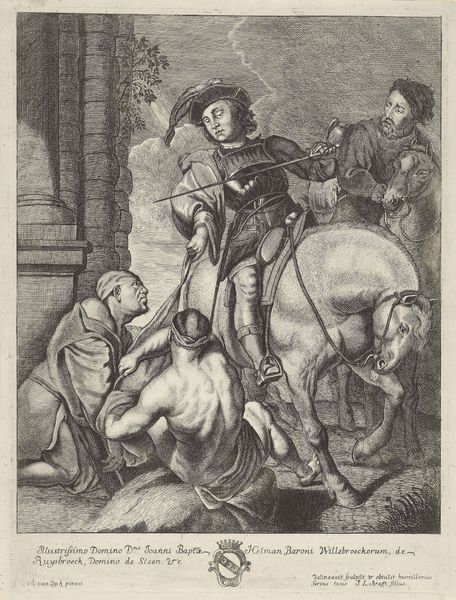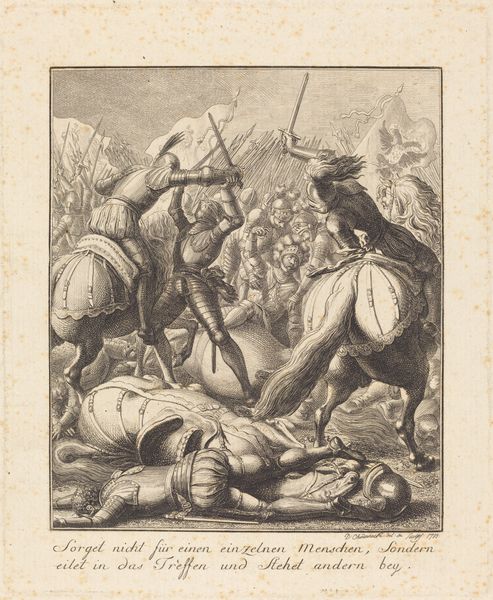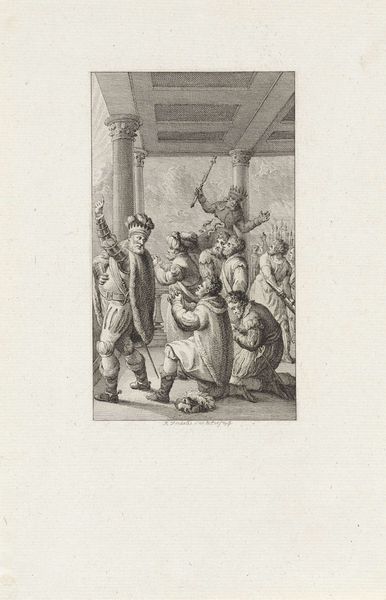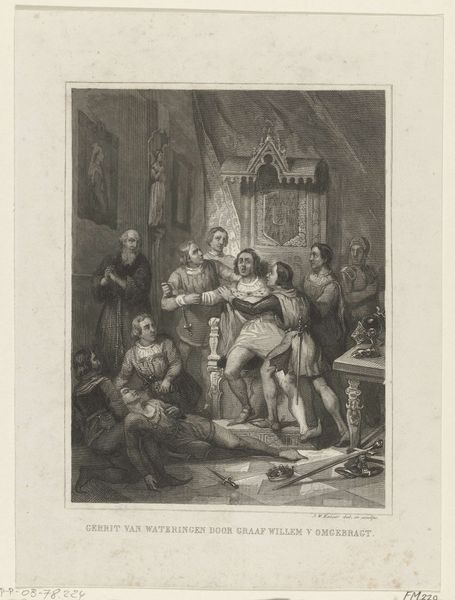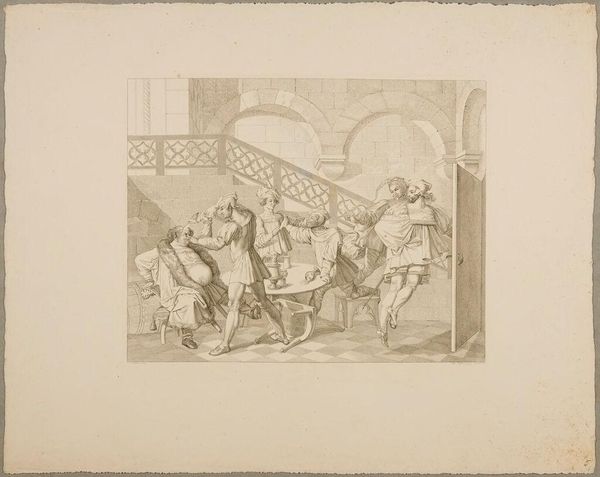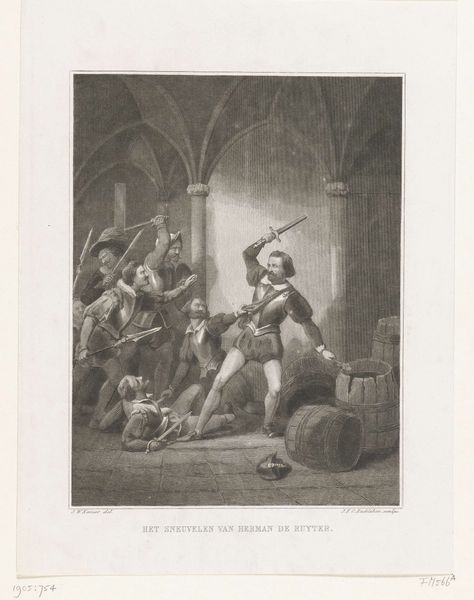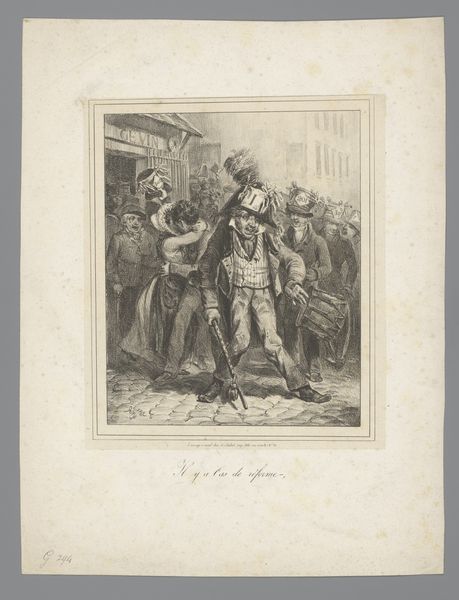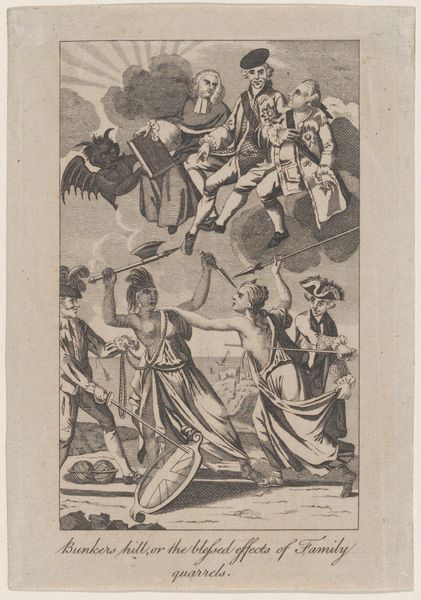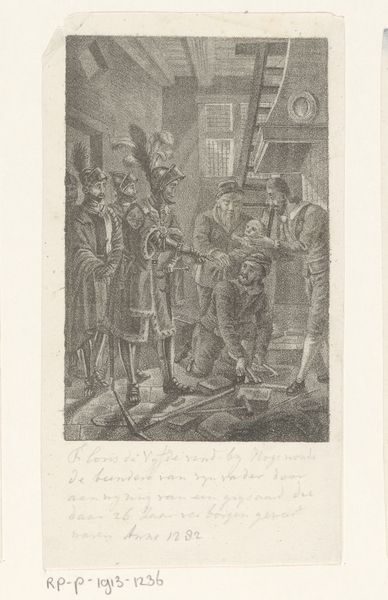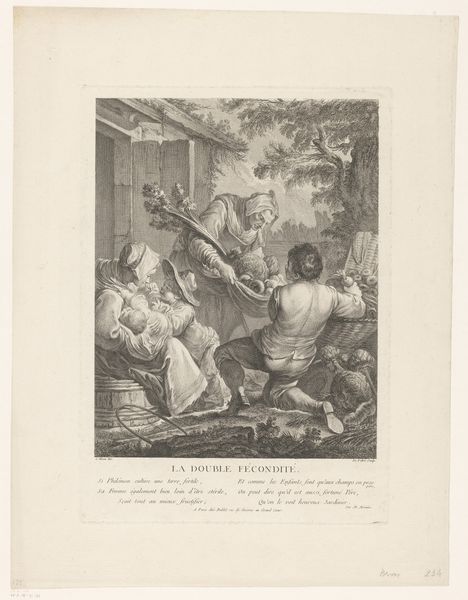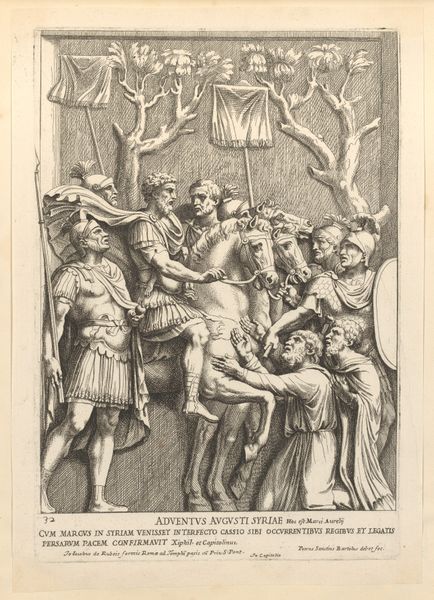
Fotoreproductie van een gravure van Herman de Ruiter, in gevecht met Spanjaarden in Slot Loevestein, door Jan Frederik Christiaan Reckleben 1855 - 1885
0:00
0:00
print, paper, engraving
#
paper non-digital material
#
narrative-art
# print
#
paper texture
#
paper
#
history-painting
#
engraving
Dimensions: height 61 mm, width 106 mm
Copyright: Rijks Museum: Open Domain
Editor: This is a photo reproduction of an engraving, dating from somewhere between 1855 and 1885. It depicts Herman de Ruiter in a fight with Spaniards in Slot Loevestein. The artist is Jan Frederik Christiaan Reckleben, and it's done on paper. I find the action really captivating, almost theatrical. What stands out to you in this piece? Curator: I immediately consider the socio-economic context of its creation. This reproduction, made relatively late in the 19th century, speaks to a burgeoning interest in historical narratives as commodities. What purpose did it serve to reproduce this specific violent struggle onto paper using the printmaking process? Was it intended for mass consumption, aligning with nationalistic sentiments and the construction of historical "heroes" like de Ruiter? Editor: So, you are suggesting that the reproduction itself is significant, beyond just depicting a historical event? Curator: Exactly! The material – the paper, the ink – and the technique of engraving itself facilitated the wider dissemination of a very specific, potentially biased, version of history. Consider the labor involved in creating this print and the labour needed to purchase, display or even throw away the material. Who owned the means of production, and whose stories were deemed worthy of replication and circulation? Those are fundamental questions in considering this work. Editor: That's a perspective I hadn’t considered. The shift from focusing solely on the event to the actual creation and distribution process sheds a new light on it. Curator: Precisely. And how the meaning shifts through each act of consumption, creating a narrative tied more to the industrial, commercial aspect of production and less to the veracity of the scene it depicts. It’s a manufactured image in more ways than one. Editor: Thank you for broadening my understanding of the engraving; it has added a layer of depth I would not have discovered alone!
Comments
No comments
Be the first to comment and join the conversation on the ultimate creative platform.
